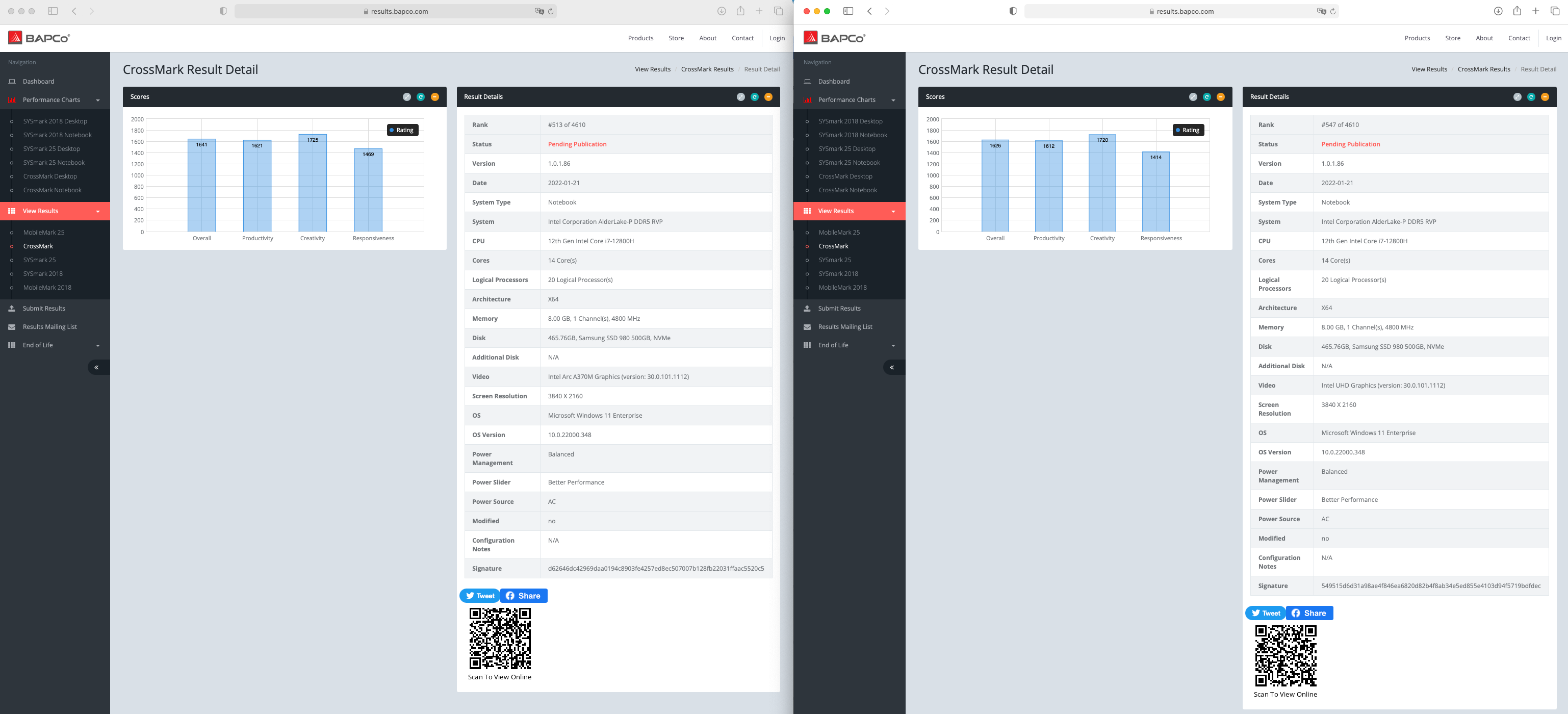Intel's Arc A370M Discrete GPU Gets Benchmarked
Entry-level dedicated silicon battles Intel's Iris Xe, but performance is still unclear.
As the release of Intel's next-generation Arc 'Alchemist' discrete graphics processors inch closer, it's inevitable that some details about their capabilities will leak. Last week someone published benchmark results of Intel's Arc A370M dGPU for notebooks and entry-level/small-form-factor desktops in BAPCo's CrossMark (via @Tum_Apisak).
Intel's entry-level Arc A370M discrete GPU was benchmarked in an Intel AlderLake-P DDR5 RVP reference system, equipped with the Core i7-12800H processor (14C/20T), 8GB of DDR4-4800 memory and a Samsung SSD 980 500GB. Coincidentally (or probably not so coincidentally), benchmark results of the very same system (even using the same power/performance profiles, drivers, and OS versions) but with Intel's built-in Iris Xe graphics featuring 96 execution units (EUs) were published on the same day.
| GPU | Overall | Productivity | Creativity | Responsiveness |
| Intel Arc 370M | 1641 | 1621 | 1725 | 1469 |
| Intel Iris Xe with 96 EUs | 1626 | 1612 | 1720 | 1414 |
The system equipped with Intel's discrete Arc A370M shows somewhat higher results in Creativity and Responsiveness group of tests than Intel's Iris Xe iGPU with 96 EUs. But the difference between the two in BAPCo's CrossMark is negligible. That said, the main value of the benchmark result publication is another confirmation that the Arc A370M is indeed a standalone GPU for notebooks.
It should be noted is that BAPCo's CrossMark benchmark is meant to measure general system performance and responsiveness 'using models of real-world applications,' but not GPUs using graphics or compute-intensive workloads.
In particular, the benchmark has three groups of tests (consisting of seven sub-scenarios): Productivity (document editing, spreadsheets, web browsing), Creativity (photo editing, photo organization, video editing) and Responsiveness (application launches and file opens taken from other sub scenarios). The only job in CrossMark that could tax a GPU in a more or less serious way is video editing, but since it is represented by very basic scenarios (image/video colorization, HDR conversion), BAPCo itself says that the benchmark's sensitivity to GPU performance is very light.
So, as the CrossMark benchmark was obviously not designed to benchmark graphics processors, it is not surprising that the Arc A370M does not bring any tangible performance improvements when compared to a beefy integrated Iris Xe GPU with 96 EUs. The real-world performance of Intel's upcoming Arc 'Alchemist' GPUs remains a mystery, for now.
Get Tom's Hardware's best news and in-depth reviews, straight to your inbox.

Anton Shilov is a contributing writer at Tom’s Hardware. Over the past couple of decades, he has covered everything from CPUs and GPUs to supercomputers and from modern process technologies and latest fab tools to high-tech industry trends.
